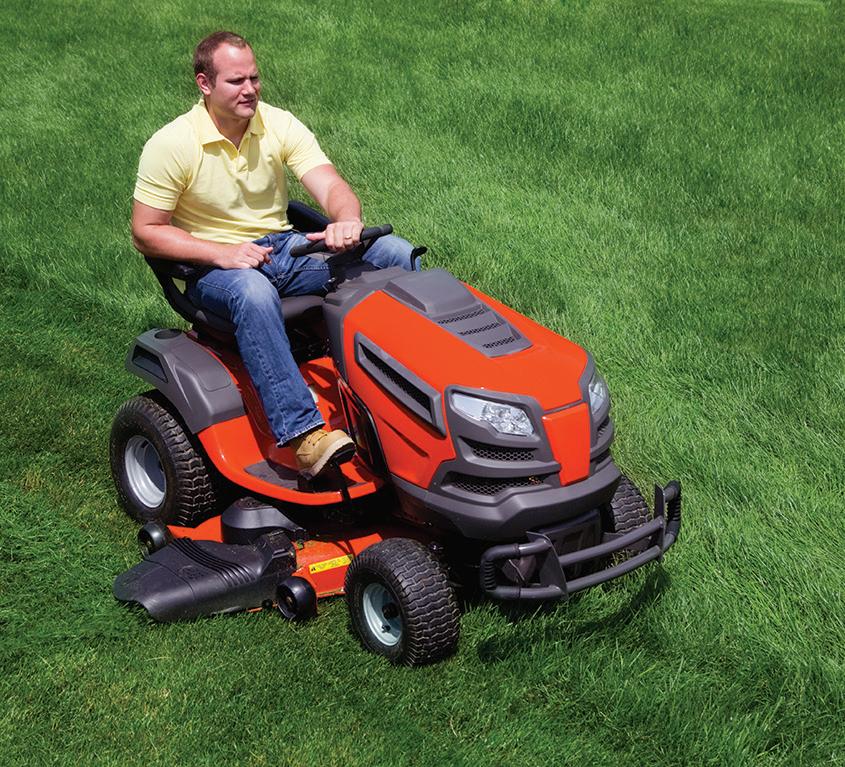STAY SAFE WHEN WORKING IN THE YARD
This Spring And Summer
A
day spent working in the yard is an ideal way to pass the time on spring and summer afternoons. A pristine landscape can add value to a property and instill pride in homeowners who put a lot of thought and effort into their lawns and gardens. A sun-soaked day can make it easy to overlook potential threats when working in a lawn or garden. But safety precautions are of the utmost necessity when working in the yard, where the risk for serious injury is considerable. For example, the American Academy of Orthopaedic Surgeons reports that, in 2016, more than 90,000 patients, including nearly 5,000 children, were treated in hospital emergency rooms for lawn mower-related injuries. Lawn- and garden-related injuries can be prevented without going to great lengths. Lawn and garden accidents and injuries can be serious. Thankfully, accidents and injuries are easily prevented when homeowners take a few simple safety precautions while tending to their lawns and gardens.
Safety Tips When Working In The Yard KNOW YOUR TERRAIN BEFORE MOWING
Knowing the terrain in your own yard can reduce the risk for accident or injury. This can be especially important when mowing the lawn with a riding mower. Adhere to manufacturers’ recommendations regarding inclines to reduce tip-over accidents that can pin riders beneath the mower. Study hilly areas of the yard prior to mowing so you know which areas are safe to mow with a riding mower and which areas are best mowed with a walk-behind mower. For greater control when using a walk-behind mower on an incline, mow parallel to the slope.
APPLY AND REAPPLY SUNSCREEN
Sunburns may not require trips to the emergency room, but they can still be serious. In fact, the Skin Cancer Foundation notes that sunburn is a leading cause in the majority of cases of basal cell carcinoma, squamous cell carcinoma and melanoma, which is the deadliest form of skin cancer. The SCF recommends applying sunscreen 30 minutes before going outside to allow the sunscreen to bond to your skin. Reapply sunscreen at least every two hours, and more often if you’re sweating excessively. The SCF recommends broad spectrum sunscreens, which protect the skin from both UVA and UVB rays. Though a product with a sun protection factor (SPF) of at least 15 is acceptable when walking the dog or driving to work,
the SCF advises using a product with an SPF of 30 or higher when engaging in extended outdoor activities like gardening or mowing.
EMPLOY THE BUDDY SYSTEM
Use the buddy system when pruning tall trees or performing any tasks that require a ladder. The Orthopedic Institute of Pennsylvania reports that more than 164,000 people are injured each year falling off a ladder. Ask a significant other or neighbor to hold the ladder in place while you climb up to reduce your risk of falling. If cutting large branches, cut them piecemeal to reduce the risk of being injured by heavy falling branches.
INSPECT THE PROPERTY FOR INSECT HIVES
The OIP notes that the most common insect stings in spring come from bees, wasps and hornets. Homeowners who are not careful can inadvertently come across hives when doing spring cleanup, making them vulnerable to bites and stings. That can be very dangerous for anyone, and especially so for people with a history of allergic reactions to insect bites or stings. Inspect areas where you’ll be working to make sure insects haven’t put down roots in your property. If you discover any hives and are hesitant to remove them on your own, contact a local landscaping firm.
PONTOTOC HOMES |13




